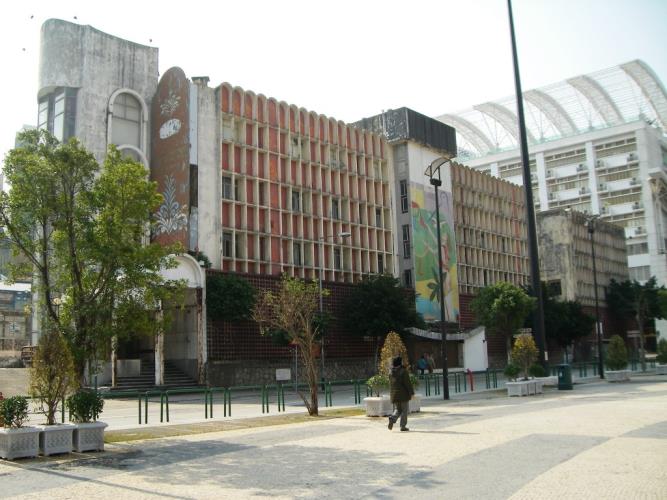A former culture desk journalist and feature writer, Choy is a literature lover and urban explorer. She now is a mum and a freelance editor.

I recently read a discussion about preserving historical buildings in Macao that are over half a century old, including the colonial-style Hotel Estoril and the Estoril Swimming Pool. Someone even uploaded the 1954 martial arts fight between legends Wu Kung I and Chen Kefu, known as the “fight of the century” which took place at the swimming pool. I then found out that the fight was in aid of the Shek Kip Mei housing estate fire in Hong Kong, underscoring the deep historical connections between the two cities. Both former colonies clearly have lots to learn from each other on the subject of heritage preservation.
I was asked to write something about creative and cultural industries in Hong Kong. After thinking for a long time, I realised that there hasn’t been such a government policy for more than a decade in Hong Kong. Could cultural preservation develop into such an industry? There has been a surge in interest among Hong Kong people recently to learn more about the history of their own city, with NGOs organising guided tours in different places. These groups charge two to three hundred dollars, with tours led by locals with in-depth knowledge of those areas. The Conservancy Association Centre for Heritage (CACHe), for example, organises neighbourhood and history tours, and also organises history seminars on topics such as Hong Kong trams, typhoons, etc. As a maritime city , the Hoi Bun Heritage Docents Society also takes people deep into different neighbourhoods in Hong Kong on its guided tours. Walk in Hong Kong is another such group, offering tours in English for people from around the world. Apart from guided tours as an industry, there are NGOs in Hong Kong doing other creative cultural businesses that also contribute to cultural preservation in the city. They do not believe that heritage preservation is necessarily a loss-making venture, and in fact is entirely profitable and sustainable. One such example is HULU Culture, established in 2009.
HULU Culture’s founder Simon Go is an experienced photographer. His wife Iman Fok is a former social worker. Their vision of cultural preservation is extremely expansive. They are not only the pioneers of local guided tours in Hong Kong, but they also engage in local historical research, building relationships with neighbourhood residents, and are also trying to make use of social capital to find ways to economically reinvigorate neighbourhoods by searching for creative elements in them. Since 2010, after hosting the Heritage X Arts X Design event at the former Hong Kong Police Married Quarters on Hollywood Road, they’ve organised similar events in various places around Hong Kong, with funding from the Hong Kong Jockey Club of more than HK$4 million each time. HULU Culture has also established a store in PMQ (the former police married quarters), selling locally-designed items, and also inviting craftsmen of old Hong Kong trades such as shoemakers and blacksmiths to talk about their work. Among young people in Hong Kong there has also been a recent resurgence in craft-making; these workshops are always fully-booked. When it comes to cultural preservation, there’s more than just protecting architecture and places. Passing down knowledge of traditional crafts to the next generation is also extremely important and something that deserves to be safeguarded.